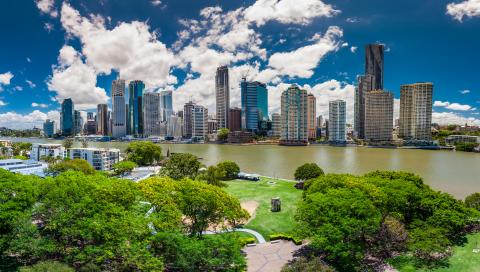Congratulations to the Australian Institute of Landscape Architects (AILA) for organising a thought provoking, alliance building, and soul searching symposium in Parliament House on progressing a Living Cities agenda in Australia. Following quickly on the heels of Minister Hunt’s game changing speech from the 18 January on the Federal Government’s priority to ‘green’ cities and increase urban habitat and canopy coverage. The turnstiles were moving first thing with speeches from Minister for Major Projects Paul Fletcher, Shadow Minister for Infrastructure and Cities Anthony Albanese and Greens MP Adam Bandt.
The fact that the speeches were quite different in approach, key messages and focus areas, demonstrates that the concept of prosperous, accessible and liveable cities is clearly a contestable space of ideas. This can only be welcomed of course – planning and generating ‘shared value’ is very much a concept on its L plates.
As an advocate for good urban water policy I was pleased that ‘Albo’ highlighted the Cooks River restoration project in inner Sydney. The project to ‘green’ a previously channelised water course, to improve recreational opportunities, to improve the connectedness of people to green space and water and provide space that appears from literature is as good for mental health as it is for physical health.
But is a Liveable City the same as a Living City? The inspiring aspect of the symposium was the genuine drive and willingness of the many stakeholders present to help the government and opposition parties develop aspirational policy to support the development of a Living City.

Thankfully, having sat through many hours of so-called Liveable City and Infrastructure conferences and workshops, transport took the ‘back seat’. The symposium offered the space to explore the other complex social and physical components of our built environment and to talk about creating a Living City – a city that breathes, has beautiful amenity, that provides shade and quite possibly colour through the seasons.
As the name suggests, a Living City is a healthy city where its citizens enjoy walkable parks, recreational spaces and thoroughfares (as the facilitator Adam Beck mused, sitting is the new smoking). Cynics will say this is some kind of utopia, but developing shared value through collaboration and co-investment, is underway right now across this country. The Greening the West program in Melbourne’s western suburbs is an excellent example of councils, City West Water and many other stakeholders coming together to change the urban environment for the better.
Kate Lynch who is heading up the Cities Taskforce in the Department of the Environment, also presented. The take home messages were:
- Government is particularly interested in barriers that organisations face in ‘greening’ cities as well as what can be done to remove them
- Case studies are very important, particularly in demonstrating not just the benefits but also where obstacles and difficulties arise and how these can be improved
- If you want anything done, you need to demonstrate that voters, the community and customers are behind you.
Integrated planning and delivery of the infrastructure sectors with land use planning rolls off the tongue so easily, but let’s face it, we aren’t there yet. Too often in creating a Living City, opportunities for combined service delivery seems too hard or is quite possibly not even thought about. We all need to stop saying and start doing – and influencing those in decision making positions to insist on it. The news isn’t all bad – there are new case studies every day to demonstrate the power of integrated planning.
Whatever resonates with you, the goal of achieving a Living City is no less or more aspirational than creating a Liveable City. Australia can and already does operate on a competitive advantage of cities that are supported with high quality infrastructure. We need to keep up with research (through organisations such as the CRC for Water Sensitive Cities), reinvesting (providing the right conditions for private sector investment) and ‘repurposing’ that infrastructure to ensure our cities have healthy and prosperous citizens.
